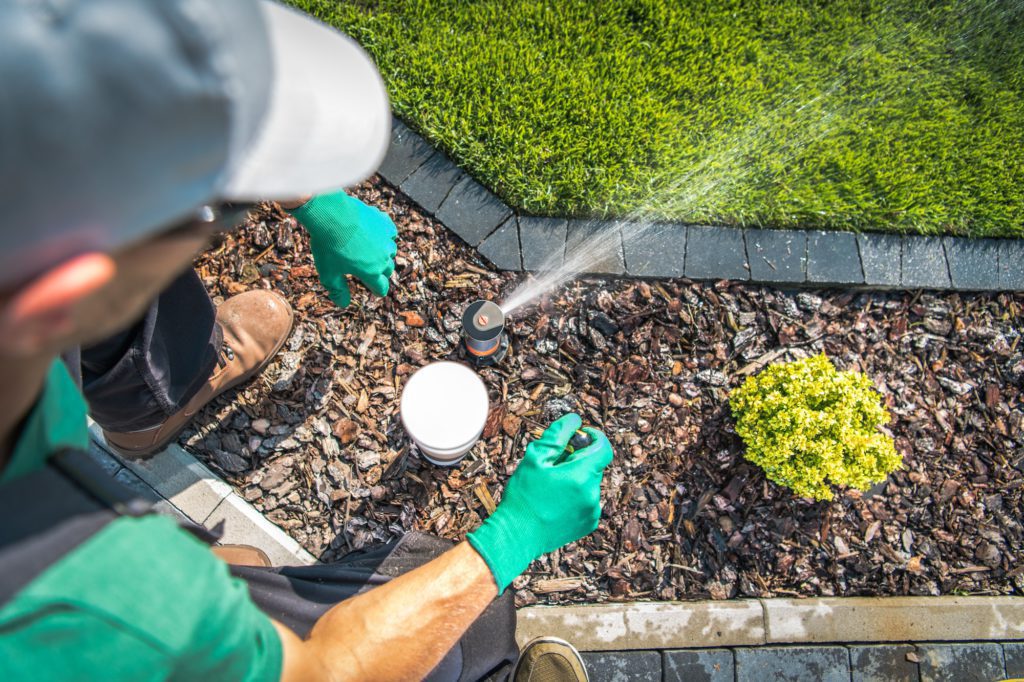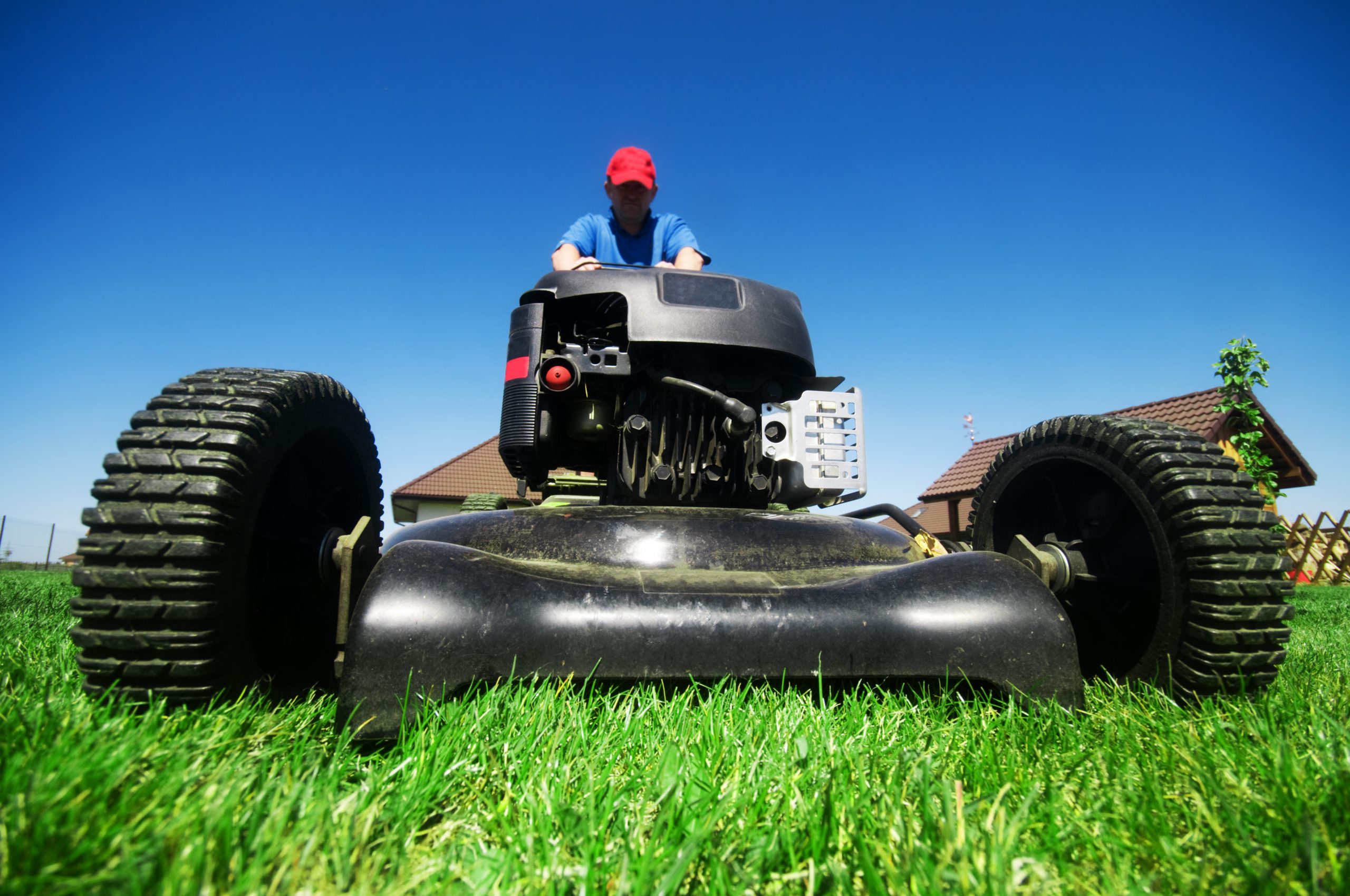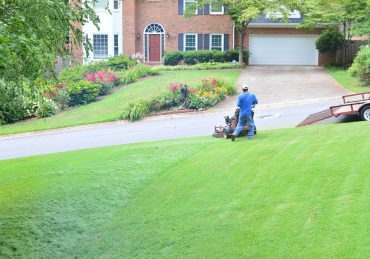When watering your lawn with a sprinkler, you should aim to provide 1 to 1½ inches of water per week. The duration depends on your sprinkler type; oscillating sprinklers may need 30 to 60 minutes, while rotary and impact sprinklers usually require 15 to 30 minutes. Monitor water output using catch cans, adjusting for soil type and climate. Ensuring proper timing and coverage is essential for a healthy lawn, but how can you avoid common watering mistakes?
How Much Water Does Your Lawn Really Need?
You’ll want to aim for about 1 to 1½ inches of water per week for your established lawn, but this can vary depending on your climate and lawn type.
For instance, lawns in hotter, arid climates typically require more frequent watering compared to those in cooler, wetter areas.
Furthermore, the type of grass and soil in your yard can influence how often and how deeply you need to water, so tailor your approach to guarantee your lawn stays healthy and resilient.
General Rule of Thumb for Established Lawns
To keep your established lawn healthy, aim to provide about 1 inch of water per week.
Water your lawn for around 25-30 minutes per session, twice a week, for ideal moisture retention.
Use catch cans to measure your sprinkler’s output, ensuring the right watering duration.
Adjust based on soil type; sandy soils need more frequent watering, while clay soils require longer sessions.
Easily hire the best lawn & landscape pros working in your neighborhood.
Different Needs for Different Climates and Lawn Types
When determining how much water your lawn really needs, consider the climate and type of grass you have, as these factors greatly influence watering requirements.
Warm-season grasses need less frequent lawn watering, while cool-season grasses demand more.
Soil type matters too, sandy soil requires more frequent water, whereas clay soil needs less frequent, deeper watering.
Adjust for shaded areas, which retain moisture longer than sunny spots.
How Long to Water Grass With Sprinkler – Explained by Sprinkler Type

When watering grass with different sprinkler types, it’s essential to adjust the duration based on each type’s water delivery rate.
Oscillating sprinklers typically require longer sessions because they deliver water slowly, usually needing about 30 to 60 minutes per session for effective coverage.
Rotary and impact sprinklers, on the other hand, provide water more efficiently, often needing shorter sessions of around 15 to 30 minutes, while in-ground irrigation systems offer precise control, allowing you to set specific times to guarantee even and adequate watering.
Oscillating Sprinklers
Oscillating sprinklers are a popular choice for watering lawns due to their ability to cover large areas evenly.
To effectively water your sprinkler system:
- Run time: Operate for about 2 hours weekly to water the lawn adequately.
- Divide sessions: Split into three 20-minute sessions for even coverage.
- Optimal timing: Water early morning to reduce evaporation.
- Monitor output: Use containers to measure water depth.
Rotary and Impact Sprinklers
Even though rotary and impact sprinklers may seem complex, they’re quite efficient at delivering water to your lawn.
Run them for about one hour weekly, ideally splitting this into two 30-minute sessions for even coverage.
Place and overlap sprinklers carefully, and run them early in the morning to reduce evaporation.
Regularly check for clogs to guarantee the sprinkler distributes water effectively.
Easily hire the best lawn & landscape pros working in your neighborhood.
In-Ground Irrigation Systems
In-ground irrigation systems offer a convenient and efficient way to keep your lawn healthy, especially when compared to manual watering or portable sprinklers like rotary and impact types.
To optimize your watering routine, consider these points:
- Spray sprinklers: Run for 20 minutes, three times weekly.
- Rotor heads: Operate for 30 minutes, twice weekly.
- Drip systems: Water for several hours weekly.
- Irrigation audit: Use a catch can test.
Best Time of Day to Water – and Why It Matters
When considering the best time to water your grass, early morning stands out as the ideal choice.
Watering between 6 a.m. and 10 a.m. allows water to soak into the soil efficiently, minimizing evaporation. This timing also reduces the risk of fungal diseases by giving grass blades ample time to dry before evening.
Avoid watering in the evening to prevent moisture from promoting lawn diseases.
How Long to Water Grass Seed With Sprinkler
To effectively water grass seed with a sprinkler, focus on frequency rather than duration, especially in the initial weeks.
Water lightly for 5-10 minutes several times a day to keep the top inch of soil consistently moist, which is essential for germination.
As the grass begins to establish, gradually shift to deeper watering sessions of 15-20 minutes less frequently, promoting strong root development without overwatering.
Frequency vs. Duration
While establishing a healthy lawn, understanding the balance between frequency and duration of watering is essential, especially for newly seeded grass.
Frequent, short watering sessions are vital for seed germination. Here’s a guide:
- Water 2-3 times daily for 5-10 minutes to keep topsoil moist.
- Once established, water 2-3 times weekly for 20-30 minutes.
- Monitor soil moisture regularly.
- Adjust for weather conditions.
When to Transition to Deeper Watering
As you establish a watering routine for your new lawn, it’s important to change your focus from frequent, short sessions to deeper watering practices.
After 2-3 weeks, move on to deeper watering sessions, running your sprinkler for 20-30 minutes. This encourages deeper root growth by allowing the soil to absorb ½ to 1 inch of water.
Guarantee early morning watering to minimize evaporation.
Easily hire the best lawn & landscape pros working in your neighborhood.
How to Know If You’re Overwatering or Underwatering
To determine if your lawn is getting the right amount of water, look for specific signs of underwatering and overwatering.
If you spot yellow or brown patches, or notice footprints staying visible after you walk on the grass, you’re likely underwatering.
On the other hand, if puddles form, grass feels mushy, or there’s an increase in weeds, you’re probably overwatering.
Telltale Signs of Underwatering
Identifying the signs of underwatering in your lawn can help prevent long-term damage. Look for these indicators:
- Yellow or brown patches: These are common signs of underwatering.
- Visible footprints: If they remain, your grass needs more water.
- Dull, wilting appearance: Healthy grass should look vibrant and springy.
- Blue-gray hue: This color change suggests insufficient moisture.
Addressing these issues promptly will keep your lawn healthy.
Symptoms of Overwatering
When watering your lawn, it’s crucial to strike the right balance, as too much water can be just as harmful as too little.
Signs of overwatering include yellowing grass, soggy soil, and puddles forming. You might notice mushrooms or dull grass blades, too.
Persistent wetness in the soil and increased weed growth are also indicators that you’re overwatering.
Adjust accordingly for a healthy lawn.
Want Help With Lawn Care? LawnGuru Has Your Back
If you’re looking for expert help with your lawn care, LawnGuru has you covered.
We’ll guide you to water your grass effectively with practical strategies.
Here’s how LawnGuru can assist:
- Expert Guidance: Determine ideal watering duration.
- Measurement Tools: Use tuna cans to gauge sprinkler output.
- Tailored Schedules: Adjust watering based on climate.
- Identify Issues: Spot signs of underwatering or overwatering.





